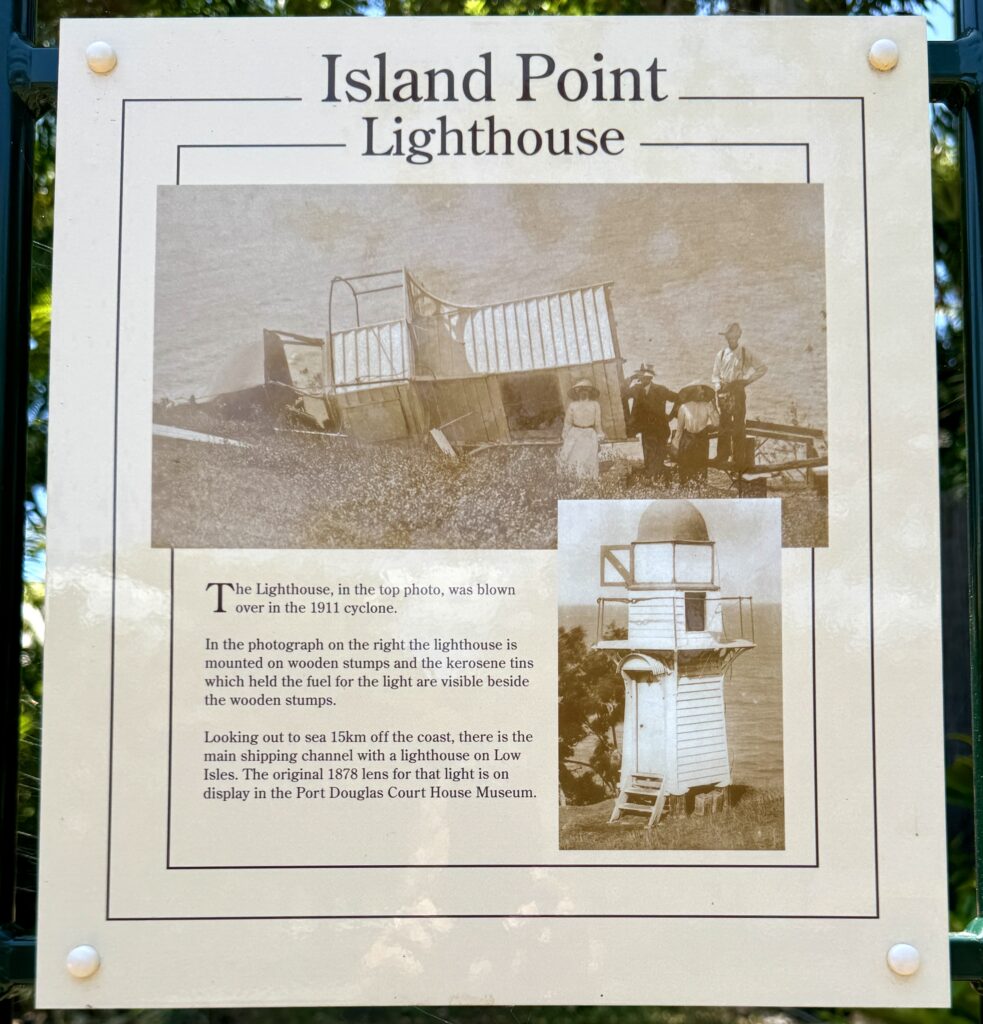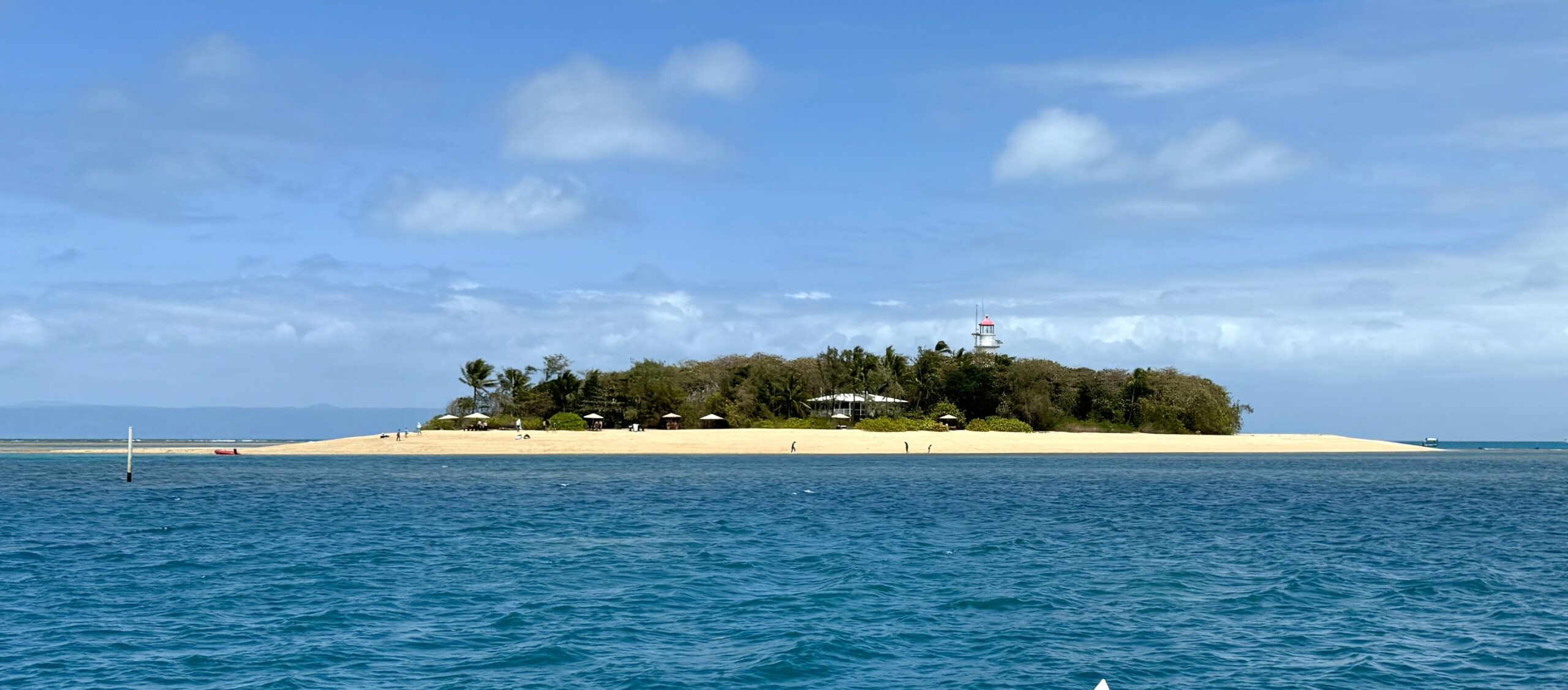
Location:
13km northeast of Port Douglas, Far North Queensland
GPS: Lat: 16° 23’ S : Long: 145° 33’ E
First Lit: 1874 (Automated 1993)
Tower height: 60′ (18m). Focal height: 65′ (20m) msl
Original Lens: 3rd Order Chance Bros. Dioptric
Range: 17nml (31km)
Characteristic: One white flash every ten seconds: [Fl W 10s]
History:
Like so many of the islands and landmarks along the east coast of Australia the Low Isles were first recorded in Captain Cook’s log. He described it as being a “small low island” and it was subsequently officially named the “Low Isles” by Captain Philip Parker King in 1819 during his voyage on the Mermaid.
As shipping traffic in northern Queensland waters increased with the development of coastal ports such as Mackay and Bowen, combined with increased trade from India and China the need to navigate the inner passage inside the Great Barrier Reef became paramount, as to sail east of the Barrier Reef was considered much more risky and added days, if not weeks to the voyage. This requirement was first recognised by the Queensland government in 1864.
A station on Low Island was established in 1874 with the recommendation for a permanent lighthouse made in February 1876 by the Chairman of the Queensland Marine Board, Commander George Heath.
Due to the small size of the island a compact circular pattern of structures was designed and the final plans were issued for tenders called in March 1877. The contract, for £ 3,195 was awarded in May 1877 to W. P. Clark who had already constructed the Bustard Head Light in 1868, and who would subsequently be awarded the contracts to construct Cape Cleveland Light, Dent Island Light (1878), Double Island Point (1884) and Pine Islet Light (1885).

First Portmaster of Queensland
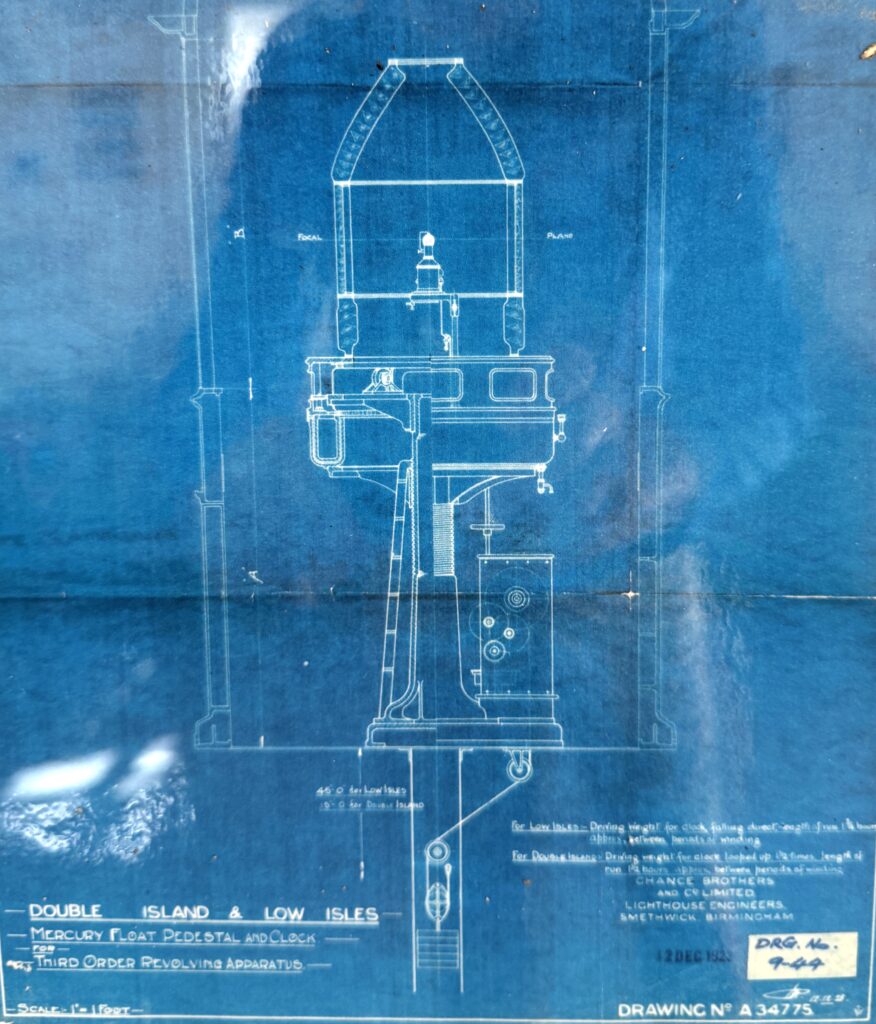
It was decided that lighthouse would be prefabricated in Brisbane starting in July, 1877 and by December that year it was being barged up to the Low Isles. Construction was completed by August the following year and the light was finally displayed on 17th September, 1878.
The Lighthouse:
The original compound consisted of the light tower, three cottages for the keeper and his assistants, a store and a boat house.
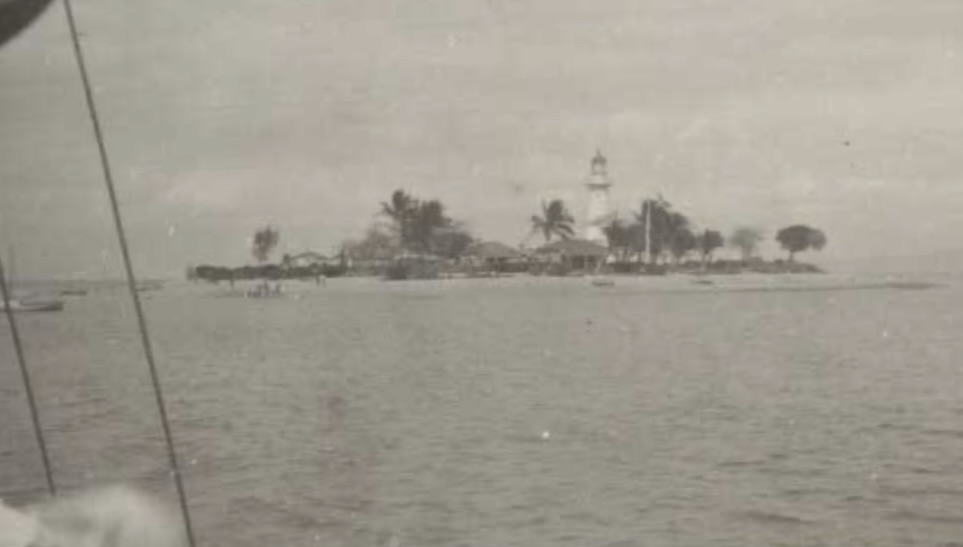


The construction involved the towers hardwood frame being clad with riveted wrought iron sheets to form a tapered conical tower. It was originally planned with rectangular windows but built with round bronze framed porthole windows, an innovation that was applied to later towers. The lantern room featured flat trapezoidal windows and a ball vent on top of the roof. The original 3rd order Fresnel lens made by Chance Bros. consisted of a rotating assembly of glass lenses and prisms that revolved using a clockwork mechanism around an oil, later modified to kerosine lamp at it’s centre. being till stand but there have been a number of technical upgrades over the years.
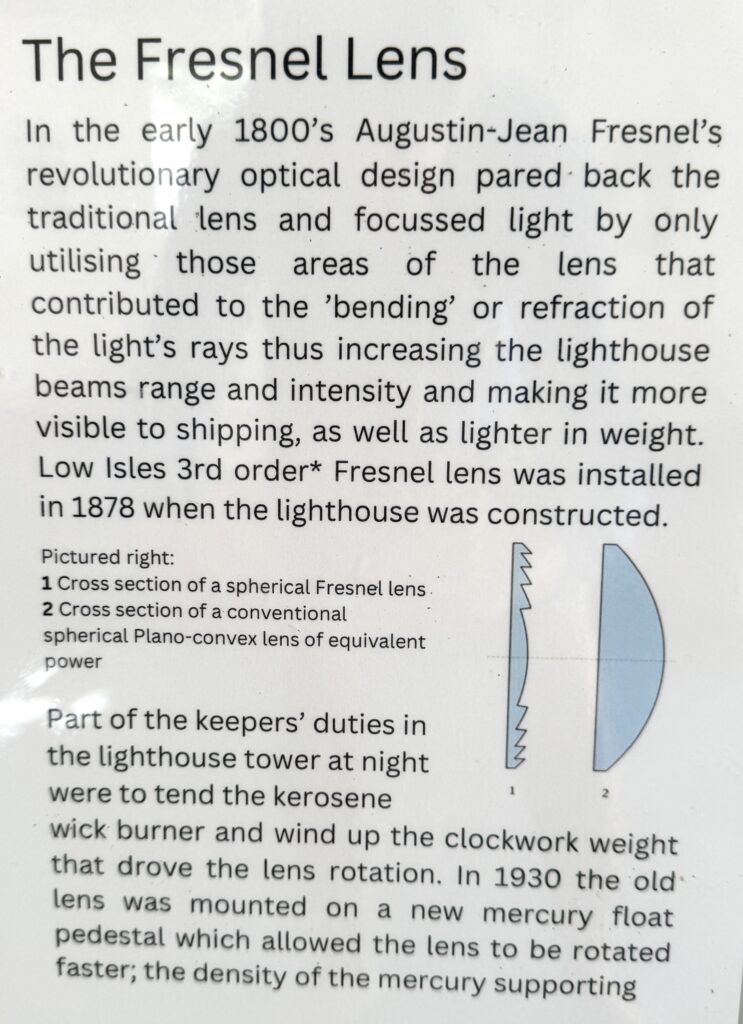


Each lighthouse has it’s own character, or pattern of flashes which are noted on navigation charts and allow vessels to distinguish lighthouses from others in the region. Originally the character of Low Isles light was a single flash every 60seconds, but today the character is a single flash every 10seconds due to mechanical innovations over time.
In 1993 the lighthouse was converted to solar powered lighting and the conversion involved the removing the original Fresnal lens which is now on display in the Courthouse museum in Port Douglas. As a fully automated light there was no longer a need for light keepers and the last of them left the island the same year.
Since 1928 when the Worlds first coral reef research program began Low Isles has hosted a number of scientific research programs specifically related to the study and preservation of coral reef systems. This tradition continues to this day and some of the original keepers cottages are used for this purpose.

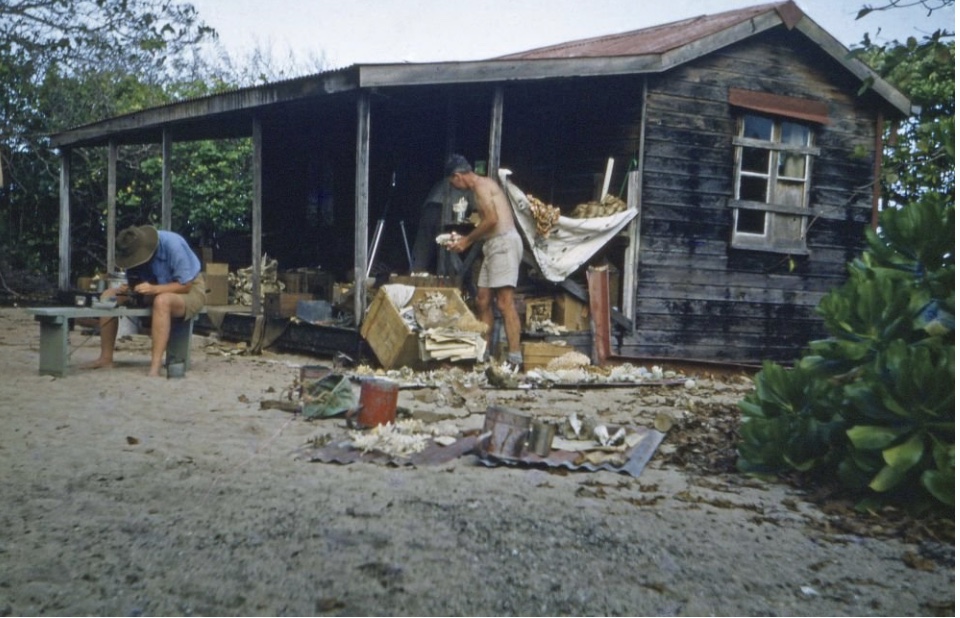

Notable Keepers and Visitors:
To the best of my knowledge there isn’t an accurate record of the various head lighthouse keepers and their assistants at Low Isles over the 115 years it was manned but what is know is that Captain Daniel Owen was the first lighthouse keeper and tragically his wife Jane died at the age of 41 and is buried on the island. It is also know that over the years of manned operation a number of local indigenous men and their families served in various roles on the island.



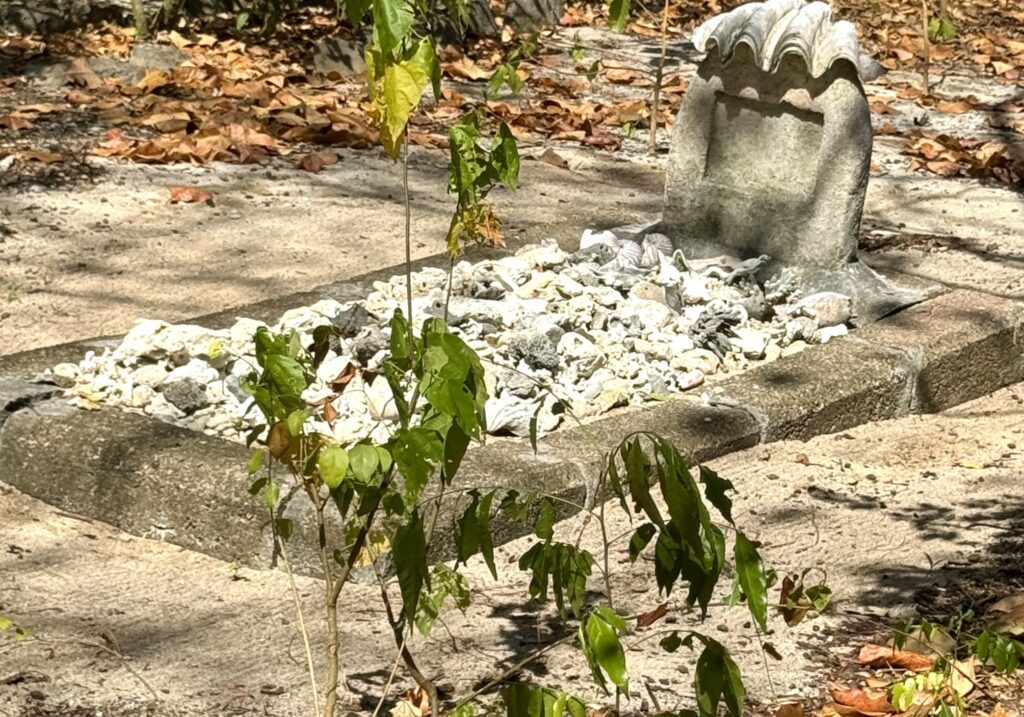
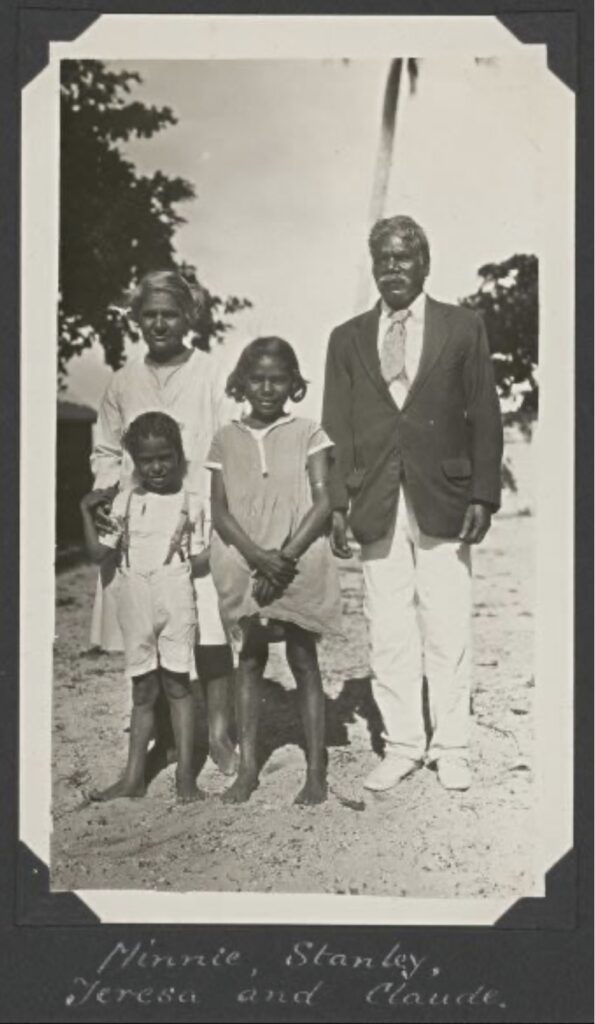
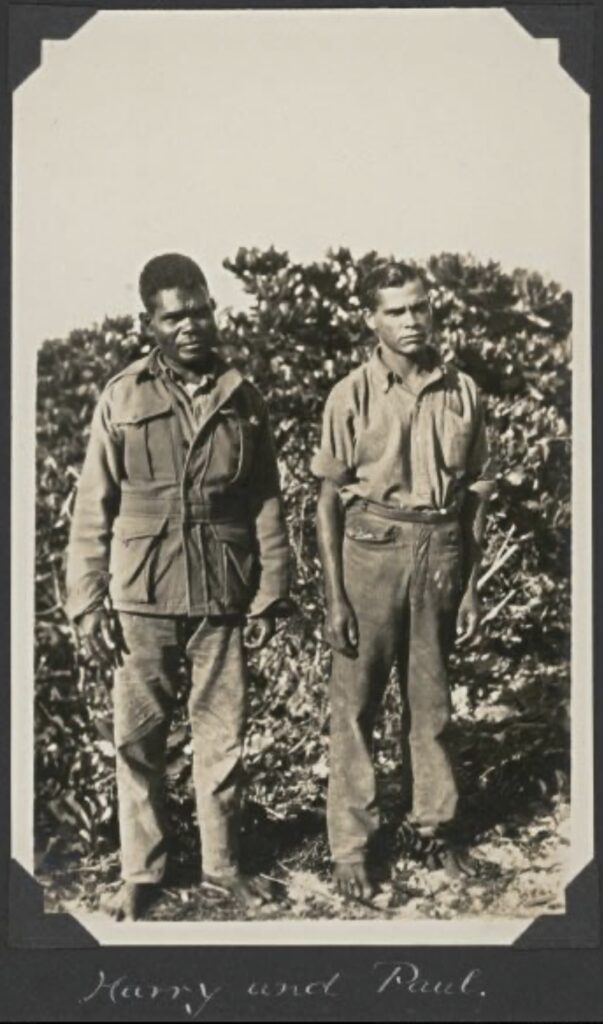
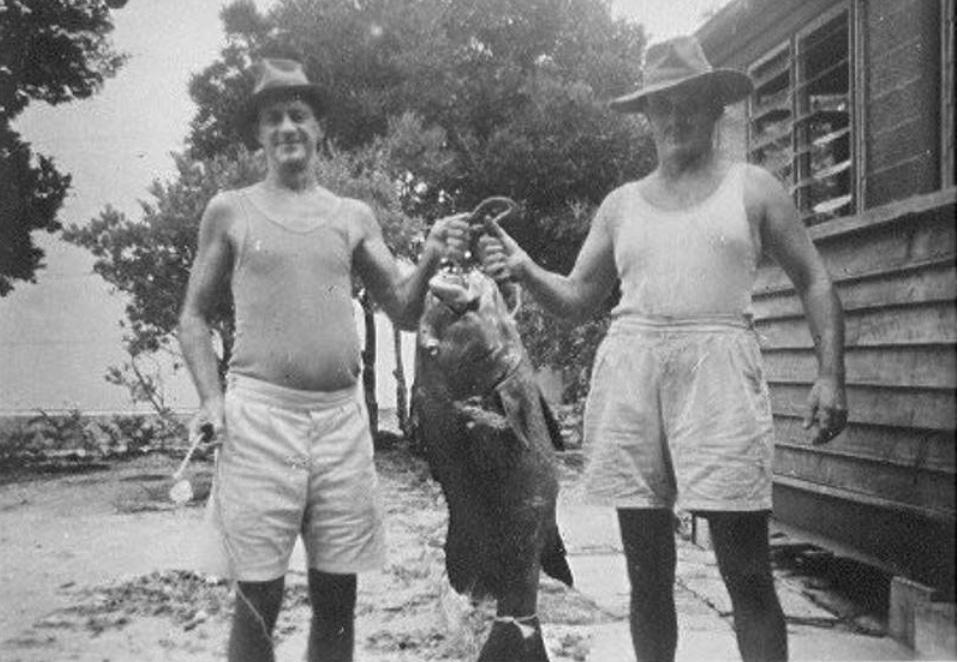
Myths and Mysteries:
Like many other lighthouses Low Isles has it’s own tragic and unsolved mystery.

Current Status:
Like all active lighthouses Low Isles is operated by the Australian Maritime Safety Authority (AMSA) but in 1994 AMSA transferred the title to Queensland Parks and Wildlife Service. Low Isles Light was listed on the Commonwealth Heritage list in 2008 in recognition of it’s cultural and indigenous heritage.



Island Point Lighthouse:
There is another, all be it little know lighthouse at Port Douglas. Now wedged between multi-million dollar properties on Flagstaff hill the current very uninspiring concrete block lighthouse is still a functioning lighthouse and replaced a much more elegant and interesting structure that was unfortunately blown over in a cyclone in 1911. It just goes to show how lighthouse architecture has devolved over the last century.
